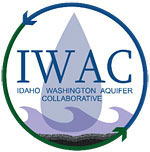 IDWR Idaho Water Rights. What is a Water Right? A water right is authorization to use water in a prescribed manner, not to own the water itself. Without diversion and beneficial use there is no water right.
IDWR Idaho Water Rights. What is a Water Right? A water right is authorization to use water in a prescribed manner, not to own the water itself. Without diversion and beneficial use there is no water right.
IDWR Adjudication: The purpose of a water right adjudication is to catalog and confirm through the court all water rights and to which property those water rights belong, binding all property owners and parties to the court decree of those water rights. The mission of the IDWR Adjudication Section is to accurately determine the water rights in a water right adjudication.
 State of Washington Department of Ecology – Water Rights. The waters of Washington State collectively belong to the public and cannot be owned by any one individual or group. Instead, individuals or groups may be granted rights to use them. A water right is a legal authorization to use a predefined quantity of public water for a designated purpose. This purpose must qualify as a beneficial use. Beneficial use involves the application of a reasonable quantity of water to a non-wasteful use, such as irrigation, domestic water supply, or power generation, to name a few. An average household uses about 300 gallons of water per day.
State of Washington Department of Ecology – Water Rights. The waters of Washington State collectively belong to the public and cannot be owned by any one individual or group. Instead, individuals or groups may be granted rights to use them. A water right is a legal authorization to use a predefined quantity of public water for a designated purpose. This purpose must qualify as a beneficial use. Beneficial use involves the application of a reasonable quantity of water to a non-wasteful use, such as irrigation, domestic water supply, or power generation, to name a few. An average household uses about 300 gallons of water per day.
State law requires certain users of public waters to receive approval from the state prior to using water – in the form of a water right permit or certificate. Any use of surface water (lakes, ponds, rivers, streams, or springs) which began after the state water code was enacted in 1917 requires a water-right permit or certificate.
Likewise, withdrawals of underground (ground) water from 1945 onward, when the state groundwater code was enacted, require a water right permit or certificate – unless the use is specifically exempt from state permitting requirements. While “exempt” groundwater uses are excused from needing a state permit, they still are considered to be water rights.
Washington Exempt Wells. Washington Supreme Court water-rights ruling will affect building permits for rural property owners. The court on Oct. 6 ruled that Washington counties must make sure there’s enough available water before issuing permits for new developments. The decision primarily affects applicants who rely on so-called “exempt” wells. Understanding the Whatcom County vs. Hirst, Futurewise, et al. decision
Water Rights Between States
A Primer on the Interstate Allocation of Water in Idaho and Washington September 8, 2015, Christopher H. Meyer, Esq. Givens Pursley, LLP
Overview: State and federal water law is designed, by and large, to allocate and administer water rights within state boundaries. A separate body of law governs the allocation of water between states.
If you imagine a water resource common to two states as a pie, interstate allocation divides that pie into two pieces. Each state, in turn, allocates its portion of the pie to individual water users within the state. In other words, interstate allocation of water, by and large, operates at the macro level. With some exceptions, it addresses disputes between states, not disputes between individual water users located in different states.
The effect of an interstate allocation of water is to require one state (typically the upstream or up-gradient state) to deliver water on an aggregate basis to the neighboring state. In order to meet this obligation, the upstream state may have to curtail uses of that water within that state. Which individual users are curtailed in order to meet the upstream state’s obligation to the downstream state is a matter of state law (mostly) within the upstream state. Once the water arrives in the downstream state, the water is allocated according to the rules of allocation within the downstream state. As a result, it is entirely possible that a senior water right in an upstream state could be curtailed, while a junior water right in the downstream state receives its full share.
Macro-level approaches (applicable to states and only indirectly to individual water users) include: (1) Equitable apportionment, (2) Compacts, (3) Congressional allocation and (4) Informal agreements.
Micro-level approaches (directly applicable to individual water users) include: (5) Export restrictions, (6) Interstate water markets and the administration of water rights transferred across state lines, and (7) Private enforcement of priority across state lines. Download the complete document to read about each of these approaches.




